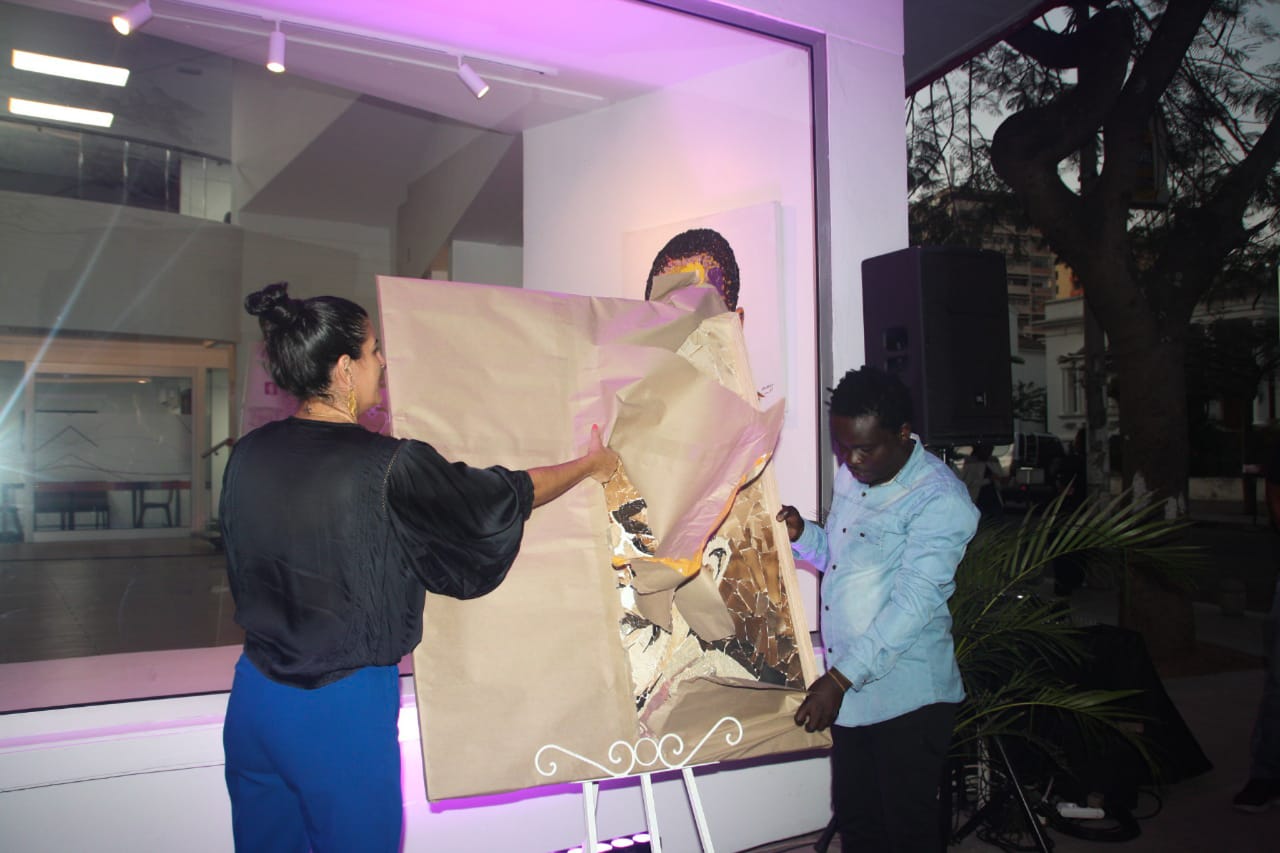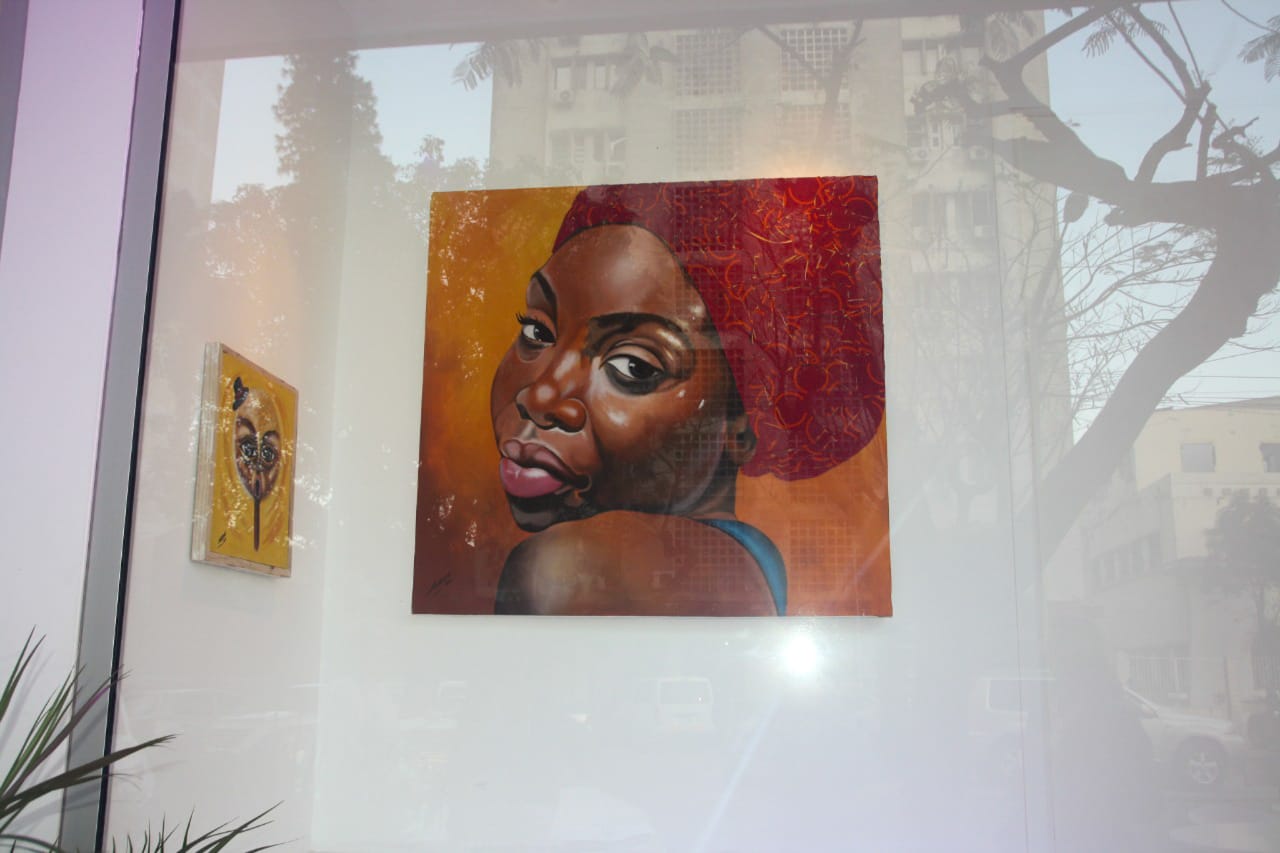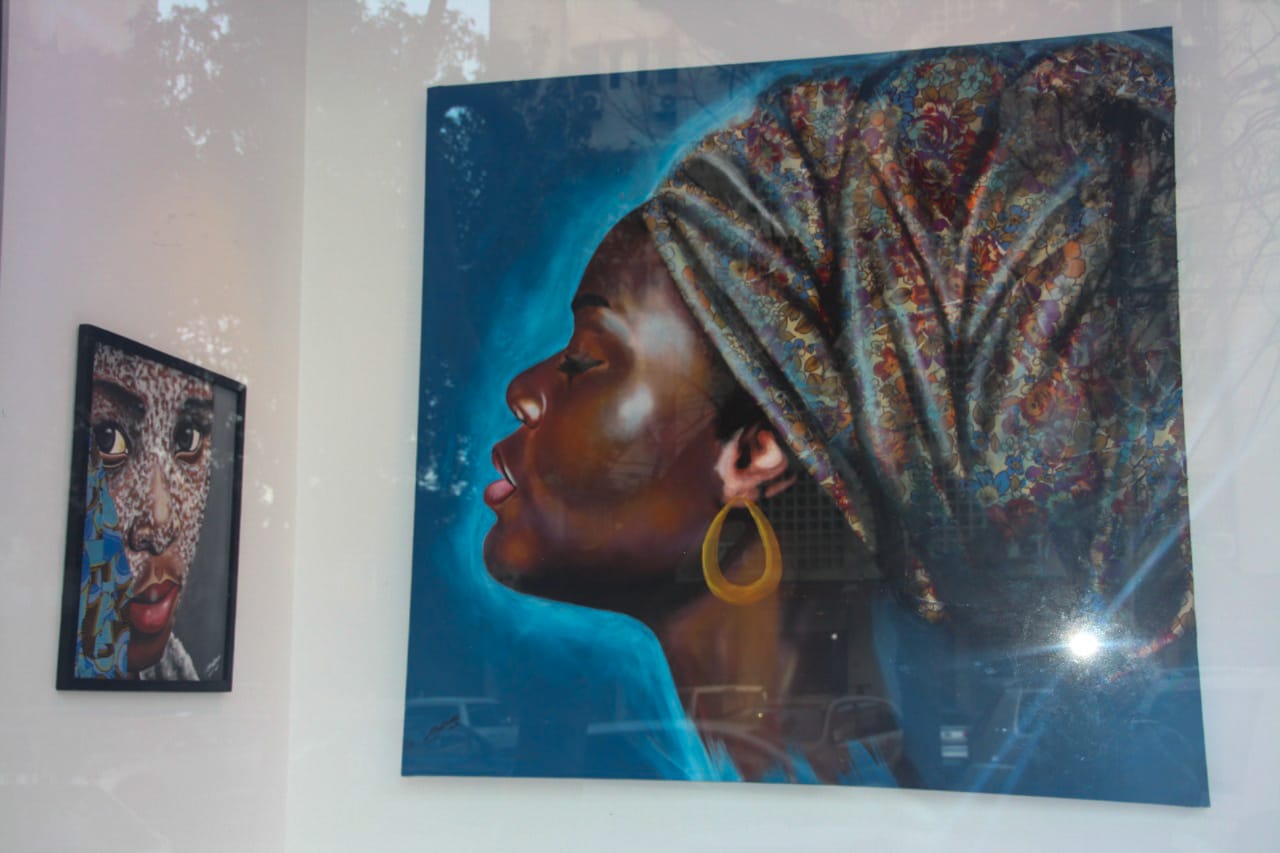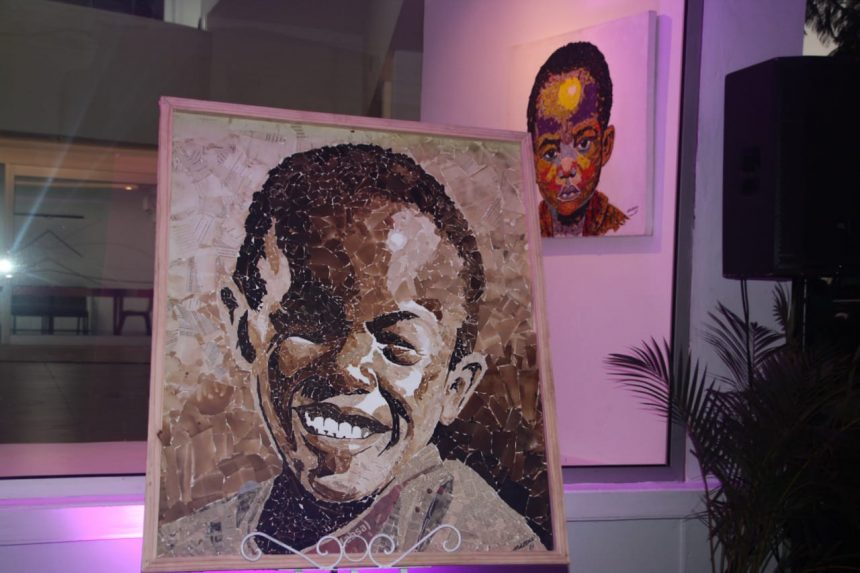Recently, we set our gaze on the faces of women and children, brushed without a brush, because the expression of their (conflicting) imaginary is printed on the multicolored capulanas. Yes, an indelible mark of the Mozambican culture to which the artist Mateus Sithole decided to apply an idea, let us say, eco-conscious.
What there is to see is the exhibition "Urban Semblances and Looks", a variety of paintings on display at the Premier Branch of Absa Bank, in Maputo, since last Friday (30). To give life to the works, the artist used discarded pieces of capulana fabric, from which he portrays the vicissitudes of Mozambican women and children.

Sithole told us that the choice of using capulana as a form of painting has to do with the fact that it "represents various cultures in the country," and that he chose to highlight those two social groups because "they are the ones who suffer the most."

"Here in the city of Maputo we find diverse cultures, and, on the other hand, as an artist, I also have the task of taking responsibility for the environment," he said, stressing that "it is possible to produce with the little that is available around us.
By the way, this reuse of material, the use of capulana and smoked paper, was a light that emerged in the course of the period of restrictions due to the covid-19 pandemic, during which I could not import the usual materials for the development of his art.

As Matthew Sithole has pointed out, the capulana rests on a base of smoked paper, which fits with Absa Bank's vision of boosting art created with mostly disposable resources.
The exhibition, which invades the eyes of everyone, even the most distracted in their personal conflicts, also takes us to a new world of perceptions. In fact, each of the paintings - not seams - mixes different social themes and conflicts of the core, such that it makes the expressionism and the abstract coincide, at the slightest,.
Artist Mateus Sithole said that these constant journeys of just two destinations, from thought to feeling, from the social and the intrinsic, represent the strength of Mozambican women and the children's uncertain longing for a better world.


Leave a Reply